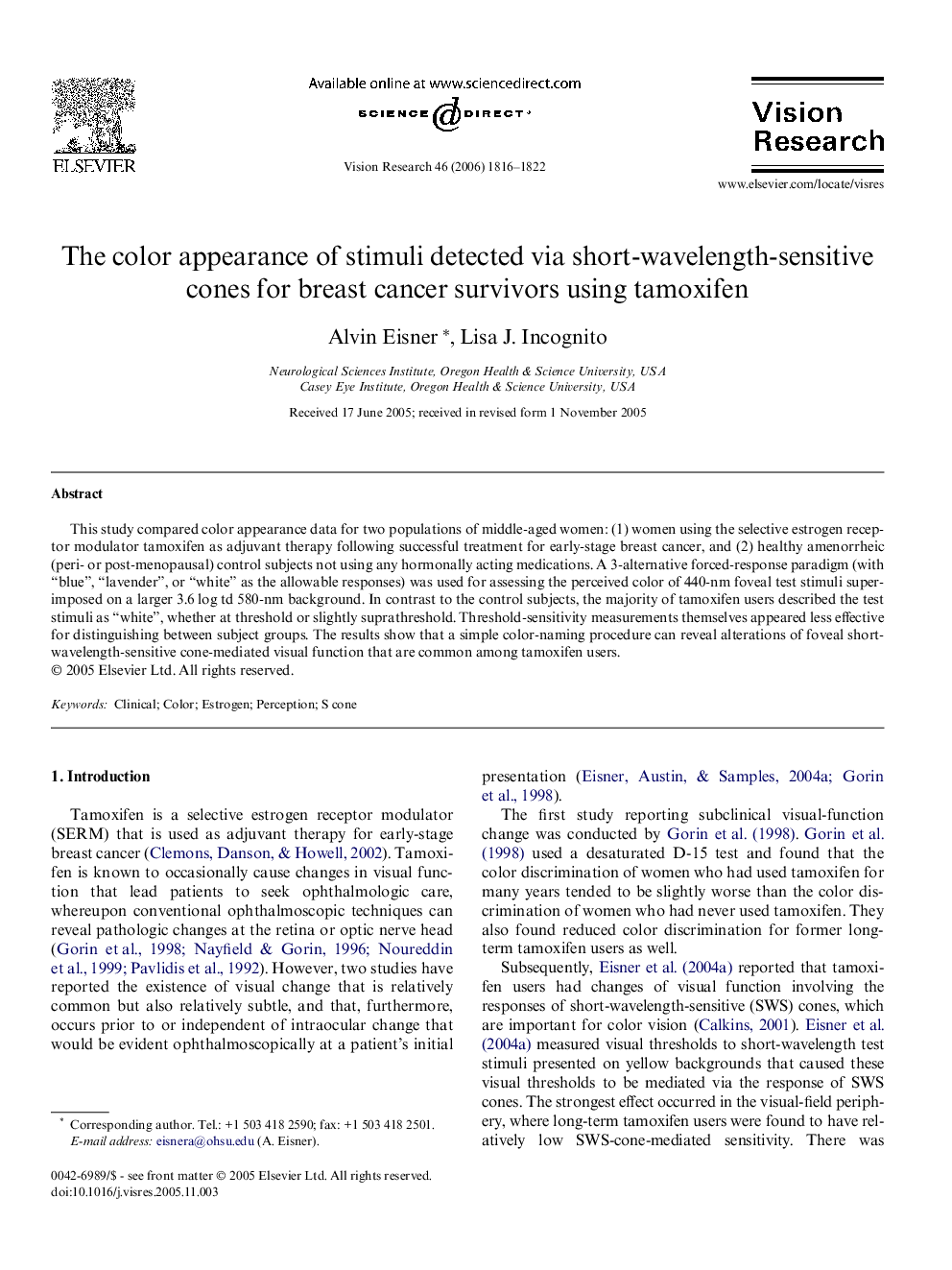| Article ID | Journal | Published Year | Pages | File Type |
|---|---|---|---|---|
| 4036729 | Vision Research | 2006 | 7 Pages |
This study compared color appearance data for two populations of middle-aged women: (1) women using the selective estrogen receptor modulator tamoxifen as adjuvant therapy following successful treatment for early-stage breast cancer, and (2) healthy amenorrheic (peri- or post-menopausal) control subjects not using any hormonally acting medications. A 3-alternative forced-response paradigm (with “blue”, “lavender”, or “white” as the allowable responses) was used for assessing the perceived color of 440-nm foveal test stimuli superimposed on a larger 3.6 log td 580-nm background. In contrast to the control subjects, the majority of tamoxifen users described the test stimuli as “white”, whether at threshold or slightly suprathreshold. Threshold-sensitivity measurements themselves appeared less effective for distinguishing between subject groups. The results show that a simple color-naming procedure can reveal alterations of foveal short-wavelength-sensitive cone-mediated visual function that are common among tamoxifen users.
